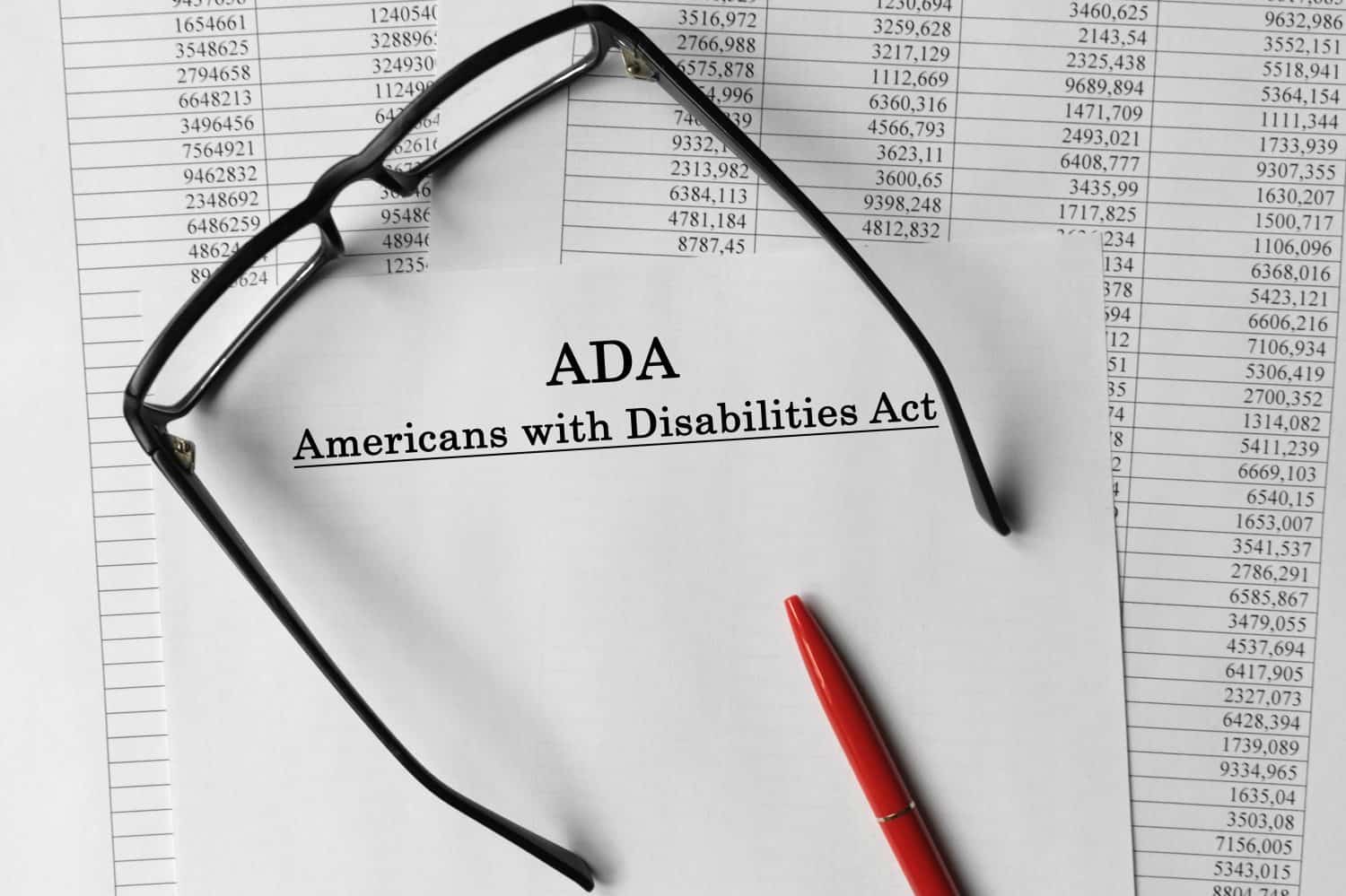The World Health Organization estimates that there are 1.3 billion disabled people in the world. Around 16% of the population experiences a significant disability, and most people in the world will experience some level of disability, either temporarily or permanently, throughout their lifetime.
However, those who experience a long-term disability will be further disenfranchised by the lack of governmental and community support for disabled people. In many countries, such as the United States of America, disability laws have hardly changed over the past hundred years and no longer reflect a reasonable standard of living for modern disabled people. Let’s look at ten things you should know about disability in America.
To come up with the most pertinent things you should know about disability in America, we sourced the opinions of health organizations and disability advocacy organizations. Then, we cross-referenced those opinions with published statistics and legal documentation to ascertain the real-life situation and how it affects disabled people daily.
We looked at statistics surrounding the care and health outcomes of disabled people, as well as the standard of living, wait times, and legal barriers that disabled people face regarding leading lives that are of the same quality as able-bodied people. We also looked at the opinions of disabled people living in the United States regarding how they believe the disability systems in the country should be revamped to better serve the disabled population. (Don’t forget to check out the City With the Worst Health Insurance Coverage in Every State.)
The Criteria for Disability Benefits Traps Disabled People in America in Poverty

To qualify for disability benefits in America, you must be deemed unable to engage in substantial gainful activity (SGA). In simpler terms, you can’t make money and collect disability simultaneously. If they earn money, SSI recipients will see their benefits reduced or stopped completely without any trial work period. In contrast, SSDI recipients must make less than the monthly SGA limit to continue receiving their benefits.
Unfortunately, the amount paid for disability benefits isn’t enough to live on in most circumstances. The maximum monthly payment for SSI is $943 for a single person or $1,415 for a couple. The median rent for a studio apartment is $1,434 in 2024, meaning a couple receiving the maximum payment of SSI cannot even afford the median rent on a studio apartment.
Additionally, SSI recipients can’t have countable assets totaling over $2,000 without losing their benefits. This condition makes it effectively impossible for disabled people to save money for anything at all. Countable assets include stocks, bonds, land, cash, mutual funds, life insurance, personal property, and vehicles. That means SSI recipients essentially can’t invest in anything without losing eligibility.
There are ways to legally retain some amount of assets without losing your eligibility, such as an ABLE savings account. However, these programs aren’t open to every disabled person. So, some disabled people don’t qualify for the right to save their own money.
It Is Federally Legal to Pay Certain Disabled People Less Than the Minimum Wage

There is a legal exemption that declares disabled people as a group of people who fall into a work category of “subminimum wage work.” The law was passed in 1938 and allows businesses to pay disabled people less than minimum wage. Disabled workers in these jobs make an average of just $3.34 per hour for their labor. The Department of Labor claims that the program is meant to transition disabled people from subminimum wage work to regular work. However, statistically speaking very few of the people employed at a subminimum wage rate ever actually break free of that cycle.
Disability advocates have long been pushing for this law to be abolished because it traps disabled people in exploitative job programs that refuse to pay them enough to afford even small creature comforts that the average person doesn’t have to think twice about. NPR interviewed a worker in one of these programs from Rhode Island, Jerry D’Agostino, who remembers that his first paycheck netted him just $12.
People working in these subminimum wage jobs are historically not offered the same protections and opportunities as their able-bodied counterparts. Many of them work in “sheltered workshops” where the company sequesters disabled workers away from the able-bodied ones. Workers within these confines rarely escape. Typically, they end up being used for cheap labor until they can no longer work and must retire.
There Are Two Different Disability Benefit Programs in America

When someone says they receive disability benefits in the United States of America, there are two primary programs they could be receiving benefits from, SSDI and SSI. Social Security Disability Income (SSDI) is the program you receive benefits from if you used to work and became disabled, ending your ability to work in the same field or a different one. Social Security Income (SSI) is what you receive if you did not work long enough (or at all) to be eligible for SSDI.
SSI is an extremely limited income. The maximum payment for an SSI recipient is under $1,000. Most SSI recipients do not receive the maximum amount allotted. Even if they did receive the maximum amount, they wouldn’t meet 100% of the federal poverty level. The maximum income for an SSI recipient is not enough to afford rent in most towns.
How much you receive in SSDI is based on how much you made at your job before you became disabled. While the income is still limited, it is nowhere near as limited as SSI limits. However, SSDI recipients younger than 65 typically make less than 100% of the federal poverty level. The earned income limit is higher for SSDI recipients as well. SSI recipients can only earn $85 per month ($65 in earnings and $20 from any other source) before the SSA starts taking money out of their benefits.
Disability Discrimination Laws Are Hard to Enforce

While the Americans with Disabilities Act (ADA) was signed into law more than 30 years ago. It aimed to address the inequities that disabled people face. However, its enforcement is limited for many reasons. It also doesn’t address some core inequities faced by disabled people, some of which are life-threatening. The enforcement of the ADA is often not a priority for the government and cases of disability discrimination are hard to bring to court due to barriers in accessing legal aid.
There is no such thing as “harmless” bigotry, but it is worth noting the difference between a case of discrimination that leads to inconvenience versus one that leads to death. Cases of discrimination against disabled people can take many forms. Some examples of disability discrimination include attempting to deny access to a public space to a service dog handler, refusing to provide reasonable accommodations to a disabled employee or targeted violence against a disabled person.
Enforcing the ADA is relatively difficult because the plaintiff must prove that the discrimination was due to the person’s disability. In some cases, such as attempting to refuse access to a service dog handler, the discrimination is easily provable. However, in cases such as a disabled person suspecting they were not hired or fired simply because they were disabled, it may be difficult to prove that the defendant acted solely due to the plaintiff’s disability.
Due to the United States defaulting to “at will” employment, the company doesn’t have to provide a reason for the firing of an employee. Thus, proving that the employee was fired in retaliation for a disability can be difficult in America.
Disabled People Are Much Less Likely to Be Employed Even If They Can Work

Being disabled doesn’t mean you can’t work. However, the rate of unemployment for disabled people in America is significantly higher than the able-bodied population. Disabled people are the largest minority in America, making up about 19% of the population. Despite being a large portion of the population, disabled people are significantly less likely to be employed than their able-bodied counterparts.
Many disabled people would be able to work as long as reasonable accommodations are provided by their workplaces. For instance, a person with chronic pain may be able to work if they are provided with a chair that they can sit in while working. However, many employers simply refuse to hire workers who are honest about their disability status. You don’t have to give a reason why you didn’t hire someone. “We preferred a different candidate” is reason enough, legally speaking. So, many disabled people never even make it to the interview stage if they disclose their disability in the application.
Disabled people are almost twice as likely to be unemployed than their able-bodied counterparts. Around 6.6% of disabled people are unemployed versus 3.9% of able-bodied folks. Only around 24.5% of disabled people are in the workforce, while 67.6% of abled-bodied people are working. This disparity isn’t due to a lack of working ability. Many disabled people are able and willing to work. It is largely due to discriminatory hiring practices and a refusal to accommodate disabled employees.
Disabled People May Not Be Able to Marry the People They Love

Cropped shot of a cheerful elderly woman hugging her husband who's in a wheelchair at home during the day
One thing people often don’t understand is how disability affects your ability to access the world in the same way that able-bodied people can, particularly in the realm of marriage. Now, there isn’t an actual law that prevents disabled people from marrying someone if they’re legally able to enter that contract. However, if you receive SSI rather than SSDI, the SSA counts your spouse’s income as your own. Therefore, if your spouse makes any money at all, you may no longer be eligible for disability benefits. If your spouse makes more than $85 a month, your SSI will be reduced or stopped.
Many inter-abled couples rely on the income from their disabled spouse’s benefits. However, legally marrying would cause them to lose that income entirely. Thus, many of these couples opt not to get married at all. Not being able to get married precludes these couples from many legal benefits and protections that able-bodied couples enjoy. A non-married inter-abled couple would not have the right to visit their spouse in the hospital or survivor’s benefits.
Additionally, disabled people who get married might no longer be eligible for their own healthcare if they are unable to work. Many disabled people rely on public healthcare, also known as Medicaid. Getting married could cause them to lose their healthcare. They would no longer be eligible for public healthcare with their spouse’s income factored in. In some cases, this can make their healthcare costs unmanageable. Private healthcare may refuse to cover their necessary procedures and medications.
It also opens disabled people up to abuse from a spouse. Since they are reliant on their spouse for income and healthcare, disabled spouses can’t leave an abusive partner.
Medicaid and Medicare Windows for Disability-Related Aids Can Be Needlessly Restrictive

Cropped image of attractive young female doctor in ophthalmology clinic. Doctor ophthalmologist is standing near shelves with different eyeglasses.
Medicaid and Medicare also have immensely restrictive windows for how often you can get certain procedures done. In some cases, these windows are published and accessible. However, many patients find out a procedure is no longer covered for them when they’re at the doctor’s to get that done.
This issue is not exclusive to Medicaid and Medicare. However, when we’re talking about people with preexisting conditions that heavily impact their quality of life—and can even be life-threatening if not monitored and treated correctly—the need for access to certain procedures and medical equipment is crucial.
For instance, if you need a wheelchair, you can only get a new wheelchair every five years. However, for people who use their wheelchairs every day, this can be unreasonably restrictive as the period doesn’t keep up with the amount of wear and tear on their current chair. If someone needs their chair to go to work, they might be left with a chair that’s falling apart and beyond repair towards the end of their waiting period.
Additionally, Medicare doesn’t cover eyeglasses. So, if you need glasses to function in society, you have to pay for them out of pocket. You may get some eye care costs covered if you have additional coverage through a Medicare Advantage plan. Even with a Medicare Advantage plan, you’re probably going to pay some amount out of pocket for your glasses because the markup on glasses in America is criminal.
Only Around 30% of People Who Apply for Disability Are Approved

2 million people apply for disability every year. Of that amount, 43% of the applicants are never assessed for disability at all. These cases are known as “technical denials”. In these situations, the applicant failed to meet a technical criterion for the American disability system, such as not having had a job for a long enough period, not having a job recently enough, or not being covered by Social Security.
Of the people who make it to the medical assessment for disability, only 38% are approved nationwide. The remaining 62% are given the option to appeal the initial denial within 60 days of receiving their case’s decision. Around 50% of cases that are denied go to the appeal stage. At this point in the application, most cases have been open for 1 year, 1 month, and 13 days. That means these people have likely been out of work for over a year with no income while waiting for their appeal decision.
Only 15% of first appeals are approved. At this stage, 20% of applicants will not appeal further. However, 77% of cases denied on the first appeal will be appealed again. We are now 2 years, 1 month, and 20 days into the application process on average. So, that’s over two years without an income. The case will be heard by an administrative law judge. This hearing results in around 51% of appeals being approved.
After factoring in every person who applied and did not receive benefits (including technical denials), only about 30% of disability cases are granted benefits.
Around 10,000 People Die Every Year While Waiting for Disability Approval

It can take years to hear back on your disability case. The average wait time from start to finish on a disability case is around 372 days, just over a year. However, in some places, the wait time can eclipse 800 days. As a result, around 10,000 people who are waiting to hear about their disability cases die from their disabling illness every year.
Disability cases are more than just the cash benefits. Disabled people also need to navigate the public healthcare system—which can also refuse to service them. With no healthcare and no income, many people pass simply from being unable to treat the illness which caused them to apply for disability in the first place. Many more die from complications arising from not treating their illness. Even more pass from poor living circumstances caused by the lack of income and healthcare associated with disability.
Many disabled people need specialized healthcare just to get by daily. They can’t wait two years without healthcare and income to address their pertinent health issues. Thus, many disabled people do not make it to the part of their lives where their disability is recognized by the public systems that are meant to take care of them. People with serious physical ailments often die without ever receiving treatments that could have prolonged their lives because they cannot afford to access them and the disability systems in America were not prompt enough to save their lives.
Around 8,000 People File Bankruptcy Every Year While Waiting for Disability Approval

Of those who do not die from their illnesses during the disability application process, around 8,000 of those people will declare bankruptcy during the disability process. Since disability impairs a person’s ability to work and earn an income, many disabled people end up insolvent, as they’re living off of credit cards, loans, and charity. When all of this inevitably catches up to them as they’re still waiting for their case to be heard, they’re forced to declare bankruptcy.
Bankruptcy can severely limit a person’s financial options moving forward for almost a decade. Even if the person is approved for benefits, the bankruptcy will stay on their record. It will damage their ability to improve their life. They will be largely incapable of being approved for any sort of financing. So, they won’t be able to get a car or own a home until the bankruptcy is off their record.
This ultimately means that many disabled people have few financial options, perpetuating the cycle of poverty for them. It limits where they’re able to live. They likely can’t own a car, which may be necessary to access necessities such as grocery stores. They’ll also be unable to own things like land, which are huge factors for building generational wealth.
Disabled people are often disenfranchised by the lack of financial safety nets for people who suddenly become disabled. Even those who were born with disabilities must go through years of waiting. Their cases may never be recognized by the systems designed to catch them. Those without familial support systems often slip through the cracks and suffer heavily and needlessly.
(For more healthcare-related articles, check out How Every State Has Suffered From Medical Shortages.)
